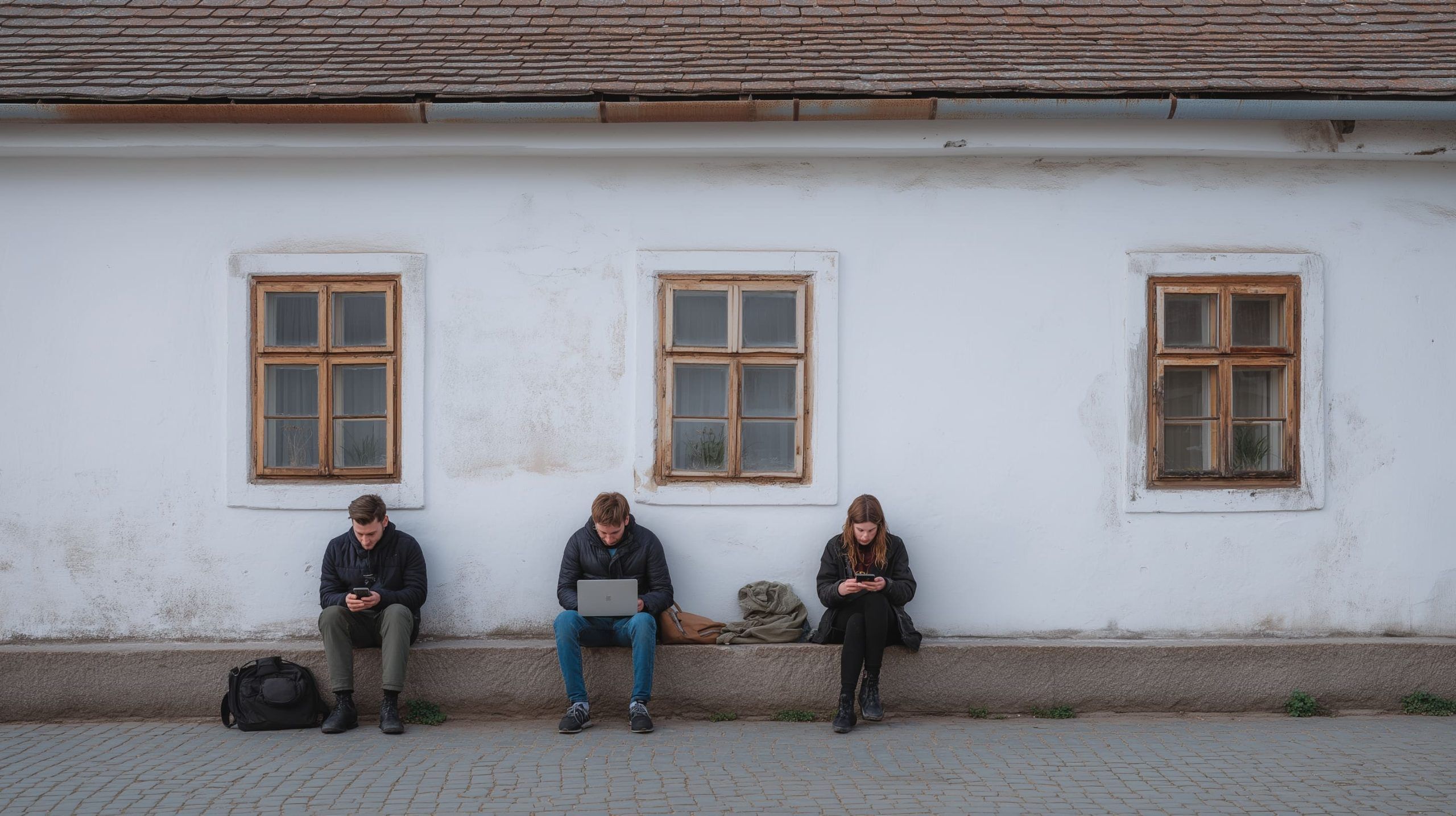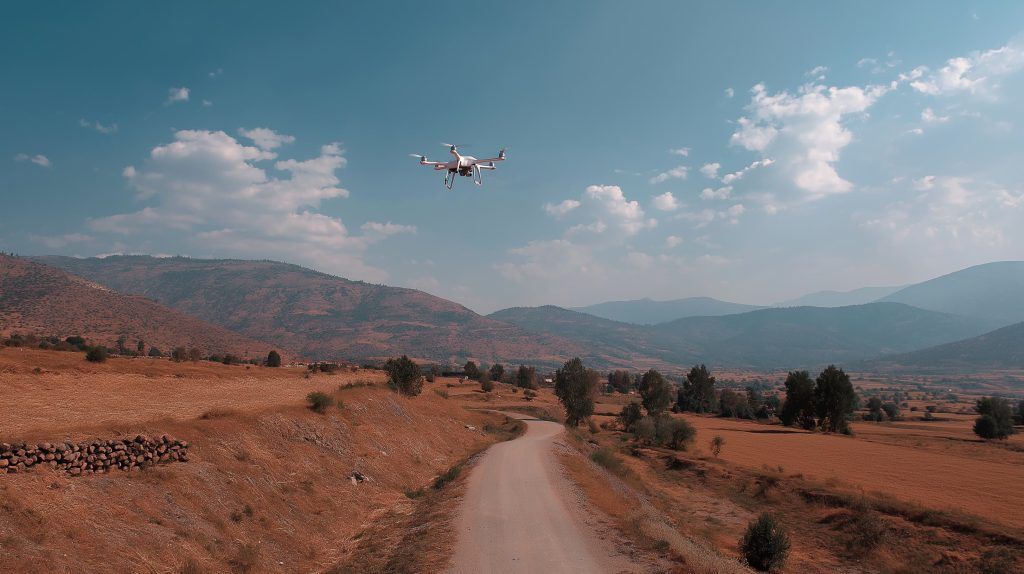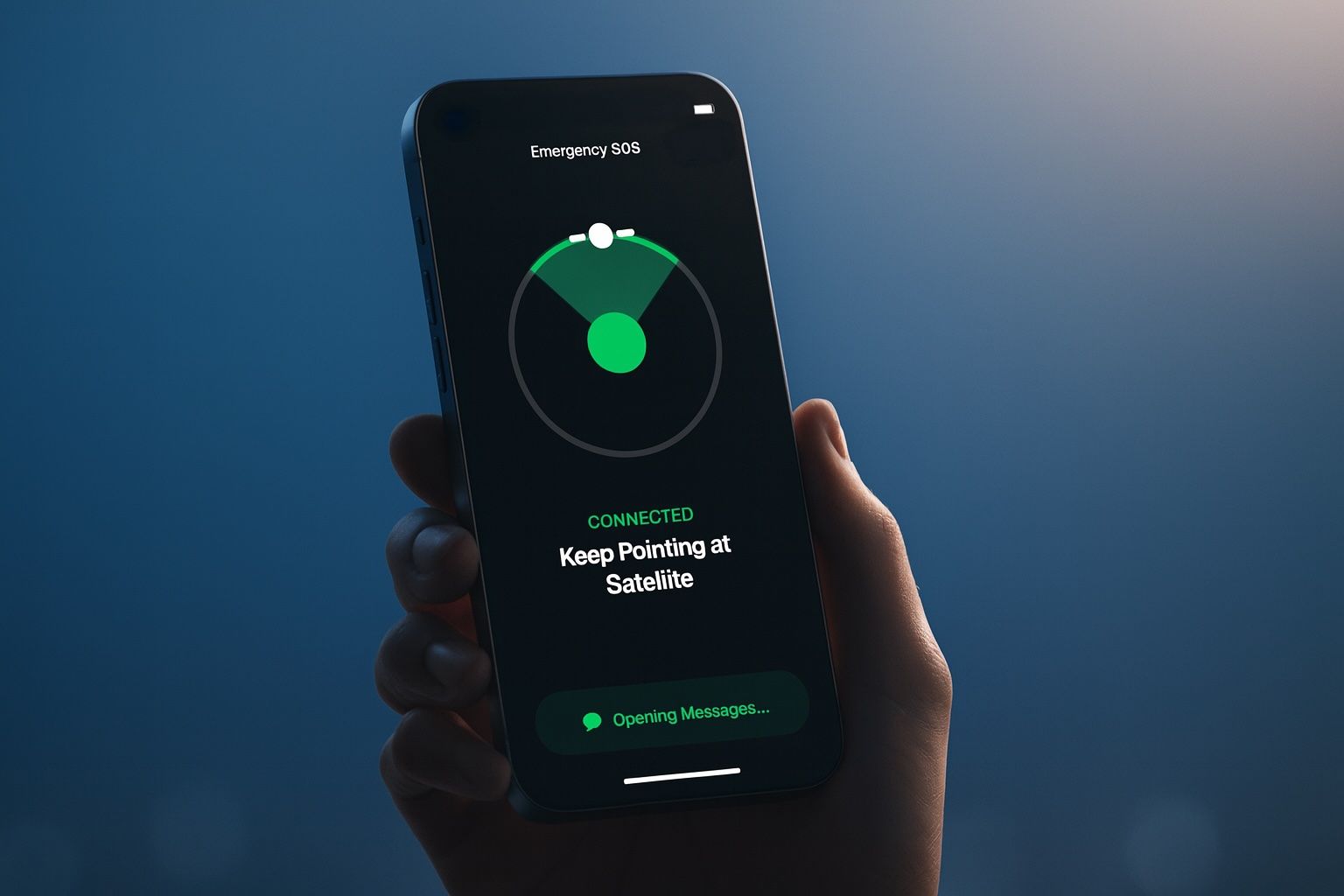- FTTH/B fiber is the dominant fixed broadband in Slovakia, delivering up to 1 Gbps download and hundreds of Mbps upload, with typical latency 5–20 ms, and by 2022 about 66.8% of households were covered by FTTP, with gigabit targets by 2030.
- DSL remains in use where fiber is not available, offering ADSL up to 8–20 Mbps and VDSL up to 50–100 Mbps, and as of late 2023 about 53% of households had ADSL/VDSL access.
- Cable Internet via DOCSIS 3.1 (UPC/Vodafone) provides up to 500–1000 Mbps down and 50–100 Mbps up with 10–30 ms latency, and about 17.9% of households are passed by cable networks.
- Mobile broadband spans 4G LTE (covering over 95% of the population) and 5G (end-2023 coverage around 70% of the population on O2 Slovakia and over 50% on Orange Slovakia), with 5G typical download speeds of 130–170 Mbps and 20–30 ms latency.
- Fixed Wireless Access (WISPs) serve rural Slovakia with typical speeds from 10–50 Mbps on older setups to 100+ Mbps on newer networks and latencies of 20–40 ms.
- Starlink became officially available in Slovakia in January 2022, costs about €60 per month with a €320 hardware kit, and typically delivers 50–200 Mbps down, 10–40 Mbps up, with 30–50 ms latency and full geographic coverage.
- Geostationary satellite services like skyDSL on Eutelsat KA-SAT offer up to 20–40 Mbps with ~600 ms latency and data caps, with plans starting around €24.90 per month and historically very low uptake (~1%).
- The National Broadband Plan (2021–2030) aims to provide universal 100 Mbps coverage upgradeable to 1 Gbps and gigabit connectivity to schools and hospitals, with an estimated €960 million investment gap to be filled by private investment and EU funds.
- Regulatory and market environment emphasizes open access, wholesale duct/pole sharing, and competitive pricing, with Slovakia consistently ranking among the more affordable EU broadband markets in 2022.
- Rural coverage remains limited compared with urban areas, with about 35% of rural households covered by very high capacity networks and about 63% of rural households having Next-Generation Access (≥30 Mbps) by 2021, while satellite serves as a crucial interim solution.
Slovakia’s internet landscape offers a mix of ultra-fast fiber in cities, widespread mobile broadband, and emerging satellite options. Overall connectivity is strong – nearly all households can get online – and prices are notably affordable by European standards. This report provides a comprehensive look at how Slovaks connect to the internet: the types of access available (fiber, DSL, cable, 4G/5G wireless, and satellite), coverage in urban vs. rural areas, major service providers, typical speeds (download/upload) and latency, quality and reliability, government initiatives, and how Slovakia compares with EU and global benchmarks. We’ll also explore the rise of satellite internet (e.g. Starlink) and whether it could shape the future of broadband in Slovakia.
Types of Internet Access in Slovakia
Slovakia has a diverse mix of internet access technologies, ensuring connectivity in most parts of the country. Key access types include:
- Fiber-Optic Broadband (FTTH/B) – Fiber-to-the-home/building provides gigabit-capable speeds. This has become the dominant fixed broadband technology in Slovakia, accounting for over half of connections [1]. Fiber networks (offered by providers like Slovak Telekom, Orange, and others) deliver download speeds up to 1 Gbps, often with high upload bandwidth (hundreds of Mbps, sometimes symmetric). Latency on fiber is very low (typically ~5–20 ms), enabling real-time applications. Initial fiber rollouts were small-scale municipal or private projects, but extensive investments have expanded fiber to many cities and towns [2]. By 2022, about 66.8% of Slovak households were covered by FTTP fiber networks [3] – a figure that continues to grow as operators push into smaller municipalities. Fiber is considered the most future-proof option, and Slovakia’s national broadband plan prioritizes fiber deployment to reach gigabit targets by 2030 [4] [5].
- DSL (ADSL/VDSL) – DSL over telephone lines was historically the main broadband in Slovakia, especially via the incumbent Slovak Telekom’s network. ADSL offered up to ~8–20 Mbps, while newer VDSL (fiber-to-the-cabinet) can reach 50–100 Mbps on short lines. DSL once dominated the market, but many subscribers have migrated to faster fiber in recent years [6]. Still, DSL remains important in areas without fiber or cable. It leverages the extensive copper landline network, giving broad coverage (often 90%+ of households), though speeds drop in rural villages with long lines. Latency on DSL is moderate (~20–40 ms). As of late 2023, about 53% of households had access to ADSL/VDSL broadband according to regulatory data [7]. DSL’s role is gradually shrinking as fiber and wireless alternatives expand, but it continues to provide basic connectivity in some smaller towns and outskirts.
- Cable Internet (HFC) – Cable broadband is available in urban centers via upgraded cable TV networks. The main cable operator, UPC Slovakia (now part of Vodafone in some markets), offers service in larger cities and towns [8]. Cable modems using DOCSIS technology deliver high speeds; UPC’s network has been upgraded to DOCSIS 3.1, enabling gigabit download rates in covered areas [9]. Typical cable packages offer 300 Mbps to 600 Mbps download, with ~20–50 Mbps upload, and latency around 10–30 ms. Cable has helped create competition in cities and reduced customer churn to fiber by offering gigabit plans [10]. However, cable’s footprint is limited – only about 17.9% of Slovak households are passed by DOCSIS 3.1 cable networks [11], mostly in dense urban locales. Outside city zones, cable is usually unavailable. Thus, cable ranks behind fiber and DSL in market share (historically the fourth-largest fixed access platform) [12]. Where it exists, cable provides a reliable alternative for residential and business internet, often bundled with digital TV and phone services.
- Mobile Wireless (4G/LTE and 5G) – Mobile broadband is ubiquitous in Slovakia via the cellular networks of four mobile operators (Orange, Slovak Telekom, O2, and 4ka/SWAN). 4G LTE coverage is virtually nationwide (over 95% of the population) and offers real-world download speeds in the 20–100 Mbps range for smartphones and home LTE routers. LTE latency is generally 30–50 ms. All carriers also offer fixed wireless access products using 4G – essentially a router with a SIM card to provide home internet, popular in some rural or suburban areas where wired options are slower. Since 2020, Slovakia has been rolling out 5G networks as well. By the end of 2023, 5G signals reached a large share of the population: e.g. O2 Slovakia reported ~70% population coverage with 5G and Orange SK exceeded 50% coverage ahead of schedule [13]. 5G (using mid-band spectrum around 3.5 GHz and some low-band) delivers significantly higher speeds – average 5G download rates are about 130–170 Mbps on Slovak networks, with uploads of 25–45 Mbps [14] [15]. In optimal conditions, 5G can exceed 500 Mbps. Latency on 5G is improving (often 20–30 ms, and could drop further with standalone 5G core networks). Mobile data usage is rising as prices have fallen and unlimited or high-cap plans are available. While mobile broadband is not a full substitute for fiber, it provides flexible internet access across Slovakia’s urban and rural areas, and 5G is expected to play a key role in connecting remote regions alongside fiber expansion.
- Fixed Wireless (WISPs and FWA) – In addition to mobile operators, numerous Wireless ISPs serve Slovakia, especially in rural communities and outskirts. These providers use radio links (often Wi-Fi 5GHz or licensed bands) to beam internet to homes via rooftop antennas. Fixed Wireless Access (FWA) was crucial in Slovakia’s broadband development – when DSL was slow to reach some areas, many villages set up local wireless networks. Even today, a considerable share of fixed broadband connections are delivered via wireless. (In neighboring Czechia, for example, nearly 40% of fixed lines are wireless [16] [17], and Slovakia has a similar reliance in its rural areas.) WISPs offer anywhere from ~10 Mbps up to 100+ Mbps depending on the technology and backhaul. Latency can be 20–40 ms (higher if using older equipment or long-distance relays). While performance can vary (wireless links are affected by weather, line-of-sight, and network load), these local ISPs fill gaps in the market. Many rural Slovaks who lack fiber or cable can still get online via a wireless provider. The government’s broadband strategy acknowledges FWA as a complement to wired networks, but overall policy is to replace legacy wireless links with fiber where feasible by 2030 [18] [19].
- Satellite Internet – Satellite broadband is the option of last resort but is increasingly viable in Slovakia. Traditional geostationary satellites (e.g. services like skyDSL using Eutelsat KA-SAT) have been available for years, offering ~20–50 Mbps download and ~5 Mbps upload, but with high latency (~600–700 ms) due to 36,000 km orbit distances. These services tend to be used only by those in extremely remote spots with no other connectivity, given relatively high cost per GB and latency unsuitable for gaming or VPN. The big change is the advent of Starlink, SpaceX’s low-earth-orbit satellite constellation. Starlink became officially available in Slovakia in January 2022 [20], marking a new era for satellite internet. With Starlink, users install a pizza-sized dish that connects to moving LEO satellites only ~550 km above Earth. Speeds of 50–200 Mbps down and ~10–40 Mbps up are typical on Starlink, and latency is a far lower ~30–50 ms – comparable to 4G/5G service. This makes it capable of supporting streaming, online gaming, and other latency-sensitive tasks that older satellite systems struggled with. As of 2025, Starlink covers all of Slovakia’s territory and has been welcomed by the government as a way to serve rural municipalities that are hard to reach with fiber [21]. The service costs around €60 per month in Slovakia (hardware kit about €320), which is costly next to terrestrial broadband, but for isolated users (mountain areas, remote farms) it provides a lifeline where otherwise only slow DSL or nothing exists. Other satellite constellations are on the horizon too – e.g. OneWeb (via partners) and Amazon’s planned Project Kuiper – but Starlink is currently the only active LEO option for Slovak consumers. In summary, satellite internet is a niche but important component of Slovakia’s internet mix, ensuring 100% geographic coverage. It is unlikely to replace ground networks in populated areas, but it augments the broadband landscape by connecting the hardest-to-reach spots and providing redundancy for critical communications.
Urban vs. Rural Availability
Like most countries, Slovakia faces a digital divide between urban and rural areas, though this gap is gradually closing. In cities and large towns, residents enjoy extensive choices and very fast networks, whereas some rural villages still have limited options:
- Urban areas: Broadband availability in cities (Bratislava, Košice, Žilina, etc.) is near universal. Virtually 100% of urban households can access high-speed internet, whether through fiber, cable, VDSL, or fixed wireless. In fact, multiple infrastructures often overlap in cities – for example, a single apartment building in Bratislava might be reached by fiber from Slovak Telekom or Orange, the UPC cable network, and maybe even a local WISP, giving consumers competitive choices. Urban coverage of next-generation access (NGA, ≥30 Mbps) is essentially complete [22]. As a result, city dwellers typically enjoy speeds and service quality on par with the best in Europe. Gigabit fiber is expanding in many city neighborhoods, and cable operators have enabled gigabit Docsis 3.1 in their footprints [23]. Moreover, 5G mobile coverage is concentrated in urban areas – all major cities now have significant 5G signal from at least one operator, augmenting the mobile data experience [24]. In short, Slovakia’s urban internet users benefit from fast, reliable, and affordable broadband, often with more than one provider available.
- Rural areas: The challenge is connecting small villages and isolated settlements scattered across Slovakia’s countryside. Rural broadband availability has improved over time (thanks to DSL upgrades, wireless ISPs, and EU-funded projects), but it still lags behind urban standards. Fiber-optic networks are scarce in the countryside – only a fraction of rural homes have FTTH/B access today. According to EU digital indicators, only about 35% of rural households in Slovakia are covered by “very high-capacity networks” (VHCN) like fiber or cable, compared to 69% coverage nationwide [25]. This means many rural communities still rely on older technologies: e.g. ADSL lines with sub-20 Mbps speeds, or FWA wireless links. The incumbent Slovak Telekom has rolled out fiber-to-the-cabinet (VDSL) to many villages, which has raised the rural baseline – about 63% of rural households had Next-Generation Access (≥30 Mbps) by 2021 through VDSL or other means, slightly above the EU rural average [26]. Still, the remaining gap is evident: some remote villages might only have basic ADSL at a few Mbps or must use 4G mobile broadband if no wired line is available. Coverage gaps are relatively small in population (since most Slovaks live in towns or cities), but geographically they include hundreds of hamlets in hilly or hard-to-reach areas. The government has identified these white spots and, through the national broadband plan and EU recovery funds, aims to extend fiber backbones and access networks to such places this decade [27] [28]. In the meantime, satellite services like Starlink are being promoted to fill rural connectivity needs in the interim [29]. Overall, while urban Slovakia is already approaching a gigabit era, rural Slovakia is catching up from slower starting points. Bridging this urban–rural digital divide is a top priority in Slovakia’s digital strategy.
Statistics: In 2022, 97.4% of all Slovak households had access to at least a basic fixed broadband connection (of any kind) [30]. However, high-speed networks are less evenly distributed – about 70–80% of households nationwide can get gigabit-speed internet, but this drops sharply outside urban areas [31] [32]. The disparity is also seen in adoption: urban households are more likely to subscribe to broadband, whereas some rural residents still go without (national broadband subscription rate is ~34% of population, which suggests around 75% of households subscribe, leaving a quarter unconnected, often in rural or elderly demographics [33]). Efforts like vouchers for rural subscribers, community Wi-Fi hotspots, and mobile network expansions are ongoing to ensure no part of Slovakia is left offline.
Major Internet Service Providers
Slovakia’s ISP market features a mix of large national players and numerous smaller regional providers. Competition is healthy, especially in urban areas, helping keep prices low and quality high. Here are the major internet service providers and their roles:
- Slovak Telekom (ST) – The former state telecom (part of Deutsche Telekom group) is the largest broadband provider in Slovakia [34]. It operates the legacy telephone network and has invested heavily in fiber. Slovak Telekom provides DSL (ADSL/VDSL) across virtually the entire country and FTTH fiber in most cities and many towns, under its consumer brand Magio Internet. It leads in subscriber numbers for fixed internet. ST also runs one of the largest mobile networks (branded T-Mobile), offering 4G/5G home internet products. For businesses, Slovak Telekom offers dedicated lines, Ethernet, and ICT services. Being the incumbent, ST’s infrastructure is the backbone in many areas – smaller ISPs often lease capacity or last-mile from it. In short, Slovak Telekom is the dominant fixed-line carrier, with hundreds of thousands of broadband customers and a presence in virtually every community (either via copper or fiber) [35].
- Orange Slovensko – Orange is a major mobile operator in Slovakia that also provides fixed internet. Historically Orange offered DSL by renting Telekom’s lines (unbundling) and in recent years has deployed its own fiber networks in select cities. Orange’s fiber (sometimes via partnership networks or municipal networks) covers parts of Bratislava and other areas, giving speeds up to 1 Gbps. It markets “Orange Fiber” plans and often bundles them with TV. Orange’s 4G/5G networks also enable fixed wireless home broadband (called Internet na doma), which is popular in areas without cable/fiber. With its strong brand and mobile customer base, Orange is a significant ISP (over 350k fixed internet subscribers per some estimates) [36]. For businesses, Orange offers corporate connectivity and ICT solutions as well.
- UPC (Vodafone) – UPC was the leading cable broadband provider in Slovakia, serving the major cities with its hybrid fiber-coax network. UPC offered broadband, TV, and VoIP bundles, and upgraded to gigabit speeds with DOCSIS 3.1 in recent years [37]. In 2018, Liberty Global sold some operations in Central Europe to Vodafone – it’s unclear if UPC SK was included, but in practice UPC Slovakia has been integrated under the Vodafone brand in some aspects (though Slovakia itself might have been excluded from that deal; UPC SK was relatively small). Regardless of branding, the cable operation continues to run, now as part of Vodafone Czech/Slovakia possibly. Coverage: UPC’s network passes roughly 20% of households (predominantly urban). It remains the third-largest fixed ISP by subscriptions. UPC/Vodafone provides an alternative to Telekom/Orange in cities, and its presence has been cited as helping keep fiber providers competitive (e.g. UPC’s gigabit offering helped reduce customer loss to fiber networks) [38].
- SWAN (incl. 4ka) – SWAN is a Slovak telecom company that operates both fixed and mobile services. SWAN has built metro fiber networks in various cities and offers fiber broadband to homes and businesses (especially in areas like Bratislava where it partnered on city networks). It also absorbed a provider called Benestra, increasing its business client base. Notably, SWAN launched the 4ka mobile network – Slovakia’s fourth mobile operator – which uses SWAN’s infrastructure and national roaming. 4ka (meaning “Fourth”) offers competitive mobile data plans; SWAN leverages this for fixed wireless home internet (4G/5G routers). SWAN’s fixed broadband market share is smaller than the big players, but it’s a key alternative operator, often innovating on price. SWAN/4ka’s combined customer count is in the several hundred-thousands range [39], making it a significant player, especially for budget-conscious users.
- Slovanet – One of the largest alternative ISPs, Slovanet provides broadband through various means: it acquired regional fiber and wireless networks and serves both residential and corporate clients. Slovanet is known for offering FTTH in certain cities, fixed wireless in others, and even ADSL in partnership where needed. They also have a triple-play (internet, TV, phone) offering. While not as big as the top three, Slovanet has a solid presence with around 200k+ customers [40]. It often operates in areas where it bought out local providers, continuing service under the Slovanet brand.
- Regional and local ISPs: Beyond these, dozens of smaller ISPs operate in Slovakia. Some are city-owned providers in medium towns offering fiber (for example, municipal networks), others are regional wireless ISPs covering rural districts. Names like Radiolan, InfoTel, etc., may not be widely known but collectively they serve a notable share of the market. These smaller players thrive by filling niches – whether offering fiber in a town that the big telcos overlooked, or covering a cluster of villages with wireless links. The competitive landscape in Slovakia is thus quite fragmented outside the big three, which has helped drive competitive pricing (no single private monopoly in broadband). According to an internet market analysis, Slovakia’s broadband market is moderately competitive, with a Herfindahl-Hirschman Index indicating a diverse mix of providers and low concentration [41] [42]. This competition contributes to Slovakia’s excellent affordability (as we’ll discuss in the pricing section).
In summary, Slovak Telekom remains the backbone provider (especially via DSL/fiber), Orange and UPC/Vodafone are the major challengers for consumers, and SWAN/4ka, Slovanet, and many smaller ISPs round out a dynamic marketplace. Notably, most of these providers serve both residential and business segments – often with separate product lines. For instance, Telekom and Orange have special enterprise offerings (dedicated leased lines, SLAs), while smaller ISPs sometimes focus on local businesses or government contracts in their region. Businesses in Slovakia can also get Dedicated Internet Access (DIA) services from these ISPs (e.g. guaranteed symmetric bandwidth fiber, often at higher cost) if they require guaranteed uptime and performance. Overall, businesses benefit from many of the same infrastructures (fiber, wireless) but with premium options for reliability.
Residential vs. Business Internet Options
While the underlying technologies overlap, internet services are often tailored differently for home users versus businesses in Slovakia:
- Residential Internet: Home broadband in Slovakia is typically sold as mass-market packages with asymmetric speeds and no formal service guarantees, but at very affordable prices. Consumers can choose from a variety of plans – for example, a fiber plan of 300 Mbps download / 30 Mbps upload, or a cable plan of 500 Mbps / 50 Mbps, etc., often bundled with digital TV or phone. Thanks to competition, prices for home internet are low: a 100 Mbps unlimited plan might cost on the order of €15–€20 per month, while 1 Gbps fiber can be found for around €25–€30/month in promotions. (According to crowd-sourced data, the average monthly cost for internet in Slovakia is only about $18 (~€17), one of the cheapest in Europe [43].) ISPs frequently run promotions like the first few months free or discounted, especially if bundled with other services. Latency and performance for residential plans are usually fine for streaming and gaming, but during peak hours there may be slight slowdowns as these are contended services (many users sharing bandwidth). Importantly, unlimited data is the norm – fixed broadband plans do not have data caps (and any fair-use policies are rarely enforced). Even mobile operators now offer big or unlimited data buckets for home use. In essence, Slovak residential internet is characterized by high speeds (for fiber/cable users), unlimited usage, and very attractive pricing relative to income, which has driven broad adoption in cities. The trade-off is that home plans typically come with best-effort support (no guaranteed uptime), and speeds can be variable.
- Business Internet: Companies and organizations often require higher reliability or symmetrical connectivity. All major ISPs provide business-grade internet options. These include:
- Business Broadband: Essentially beefed-up versions of home plans, sometimes with priority support or slightly lower contention. For example, an ISP might sell a “Business Fiber 500 Mbps” plan that is similar to the residential 500 Mbps but with guaranteed repair times or a static IP included. Pricing is a bit higher than residential, but still relatively affordable (Slovakia’s broadband is cheap enough that even small businesses often just use regular plans).
- Dedicated Leased Lines: For critical needs, providers offer dedicated internet access (DIA) via fiber or microwave links. These are symmetrical connections (e.g. 100 Mbps up/down) with a dedicated circuit, meaning the full bandwidth is always available solely to that customer. They come with stringent Service Level Agreements (SLAs) – e.g. >99.9% uptime guarantees, 24/7 support, low latency routes – and are priced accordingly (hundreds of euros per month or more depending on speed and distance). Large enterprises, ISPs, and government agencies often use these. For instance, Slovak Telekom and Orange both have portfolios of SLA-backed fiber for business, and alternative carriers like Benestra (SWAN) historically specialized in corporate leased lines [44] [45].
- Fixed Wireless for Business: In areas where laying fiber is hard or for backup, some operators provide point-to-point wireless links. These can deliver decent bandwidth (50–200 Mbps) and are used by businesses in industrial parks or remote sites.
- Mobile and Satellite for Business: Businesses also utilize 4G/5G routers for connectivity (for pop-up events, vehicles, redundancy) and even satellite links for remote operations (e.g. mining, broadcasting). With Starlink’s arrival, some Slovak companies in rural tourism or infrastructure have started using Starlink as either a primary connection (if nothing else is available) or a backup line due to its quick setup and portability.
In general, Slovak businesses have access to robust internet infrastructure in major cities, including direct fiber links to office buildings and data centers. Slovakia has a growing IT sector and many multinational companies’ branches, so the telecom market has responded with modern offerings (cloud connectivity, SD-WAN, etc.). Meanwhile, smaller businesses in towns often just use consumer-grade services which, given Slovakia’s high baseline speeds, are usually sufficient. The key difference is that business services offer greater reliability and support – critical for operations – whereas residential users trade a bit of that guaranteed service for a much cheaper price. Both segments benefit from the ongoing upgrades in Slovakia’s networks (fiber and 5G), which improve performance for everyone.
Pricing, Speeds, and Latency
One of the standout aspects of internet in Slovakia is its affordability relative to performance. Customers enjoy high speeds at low costs, and improvements in infrastructure have steadily raised the bar for bandwidth and quality. Let’s break down the typical speeds, latency, and pricing in Slovakia and how they compare:
- Download/Upload Speeds: Thanks to the prevalence of fiber and DOCSIS 3.1 cable in cities, Slovakia’s average fixed broadband speeds are quite high. The median download speed on fixed networks is around 81 Mbps (as of 2024) [46], which is on par with the EU average, and the mean speed (which skews higher due to some gigabit users) is about 145 Mbps [47]. In global rankings, Slovakia sits roughly mid-table in Europe – not as fast as fiber leaders like Denmark or Romania, but well ahead of many countries that still rely heavily on DSL. It’s common for urban households to have hundreds of Mbps: e.g. a 300 Mbps or 600 Mbps plan is a standard offering from major ISPs. Upload speeds vary by technology – fiber plans often provide 50% or even 100% of download (some ISP fiber is symmetric 1 Gbps/1 Gbps), cable plans usually give ~10% of download (e.g. 600/60), and DSL upload tops around 5–20 Mbps on VDSL. In rural areas, speeds can be lower if only ADSL (5–10 Mbps) or basic wireless (10–30 Mbps) is available. However, even mobile networks now deliver substantial bandwidth: the median mobile download speed is ~55 Mbps in Slovakia [48], meaning 4G/5G smartphones often rival or exceed an old DSL line. With 5G rollout, mobile users in coverage can frequently see 100+ Mbps without a fixed line. Ultrafast broadband (defined as ≥100 Mbps) was available to ~80% of households by recent measures [49], and usage of 100 Mbps+ plans is rising each year. In summary, Slovaks generally enjoy fast internet, especially in cities where 1 Gbps fiber is becoming a norm for those who want top-tier speed.
- Latency and Quality: Network latency in Slovakia is low on wired connections – within the country or to nearby EU hubs (Vienna, Frankfurt), pings of 5–30 milliseconds are typical on fiber/cable/DSL. This makes real-time applications (HD video calls, online gaming, stock trading) perform well. Mobile networks have slightly higher latency (LTE ~30-50 ms, 5G can reduce this to ~20-30 ms, and eventually as low as sub-10 ms in ideal cases). For an average user streaming video or browsing, these latencies cause no issues. Where it matters is online gaming or other interactive uses: here Slovakia scores well – an international assessment ranked the “5G Games Experience” in Slovakia as Excellent, indicating that 5G users feel almost no noticeable lag when gaming [50] [51]. Packet loss and jitter are generally minimal on wired networks; the Internet Society’s resilience index notes that Slovak internet users have “seamless and reliable” service performance on par with regional standards [52] [53]. The only places latency remains high are with geostationary satellite links (600ms+) which are rarely used except by a tiny fraction of users. Starlink’s ~30-50 ms latency has essentially solved that for satellite customers. Overall, internet quality in Slovakia is good to excellent – modern networks and sufficient capacity mean that outside of extreme peak congestion or the most remote links, users get near-advertised speeds and stable connections. Reliability is also high (downtime is low; fiber cuts or outages do happen but are infrequent on major providers).
- Pricing: Slovakia stands out for low broadband prices. Various analyses rank it among the most affordable internet markets in Europe. The average monthly cost of a broadband plan is around $17.74 (~€16–€18), which is almost half the European average (~$31) [54] [55]. For context, that places Slovakia in the top 10 cheapest in Europe; only a few countries (often with lower incomes or more competition, like Ukraine, Romania, Poland) have cheaper absolute prices. In practical terms, this means a Slovak consumer can get a 30 Mbps DSL or basic cable for perhaps €10–€15, a 100 Mbps+ plan for ~€15–€20, and even gigabit for €25–€30. Triple-play bundles (internet/TV/phone) might add a bit, but are still very reasonable. Mobile data is also inexpensive: unlimited 4G data plans can be found for as low as €20–€25 on 4ka or O2, and generous 10–15 GB packages for under €10. The high affordability is confirmed by international comparisons – Slovakia scores 96/100 on the affordability index (ITU’s metric) indicating that internet prices relative to income are among the best, and it ranks 3rd in Eastern Europe for market readiness largely due to competitive, low consumer prices [56] [57]. Businesses likewise benefit from lower prices than Western Europe for comparable services. It’s worth noting that these low prices are partly due to competition (multiple ISPs vying for customers) and partly due to EU regulatory frameworks that prevent overpricing. The government and regulator have also pushed initiatives like price transparency and support for low-income users, keeping broadband affordable for virtually all households.
- Comparisons: Compared to EU averages, Slovakia’s coverage and speeds are slightly below average, but its pricing is well below average. For example, around 79% of EU households have VHCN (gigabit) coverage versus ~69% in Slovakia [58], and the EU’s median fixed speed is a bit higher (Western fiber-rich countries pull the average up). However, the cost per megabit in Slovakia is excellent; consumers pay very little for what they get. In terms of reliability, Slovakia’s internet is solid though some Western European countries with more redundant infrastructure score higher on resilience/security metrics [59] [60]. But the differences are minor – a typical user in Bratislava or Prešov has an experience broadly similar to one in say Prague or Budapest. Notably, Slovakia outperforms some neighbors: it has more extensive fiber in cities than the Czech Republic (Slovakia’s largest cities have very high FTTH penetration thanks to Slovak Telekom and city nets) [61], and higher ultrafast coverage than Poland until Poland’s recent investments. Slovakia also had a head start in eliminating dial-up era issues, moving to broadband early. On the global stage, Slovakia’s average speeds are far above the global mean (which is ~100 Mbps down for fixed in 2024) [62], placing it in a group of well-connected nations.
In summary, “fast and cheap” aptly describes Slovak internet: you can get multi-megabit or even gigabit connectivity for a low monthly fee. Latency and quality are generally very good, making the internet experience in Slovakia enjoyable and enabling widespread use of online services from HD streaming to teleworking. The combination of modern fiber/4G/5G infrastructure and competitive pricing has been a boon for consumers and businesses alike.
(See table below for a quick comparison of technologies, typical speeds, and latency in Slovakia.)
| Access Technology | Typical Download / Upload Speeds | Typical Latency | Availability in Slovakia |
|---|---|---|---|
| Fiber (FTTH) | Up to 1 Gbps (1000 Mbps) down / 300–1000 Mbps up | ~5–20 ms (very low) | ~67% of households covered (cities/towns) [63]; growing coverage each year. |
| Cable (DOCSIS 3.1) | Up to 500–1000 Mbps down / 50–100 Mbps up | ~10–30 ms | ~18% of households (urban areas only) [64]. |
| VDSL (FTTC) | Up to 50–100 Mbps down / 5–20 Mbps up | ~20–40 ms | Widely available via phone lines in towns/villages; ~53% household DSL coverage [65]. |
| ADSL (ADSL2+) | Up to ~8–20 Mbps down / 1 Mbps up | ~30–50 ms | Legacy coverage over nearly all fixed phone lines; used in rural areas without upgrades. |
| Fixed Wireless (WISPs) | ~10–50 Mbps (older Wi-Fi links) to 100+ Mbps (modern) | ~20–40 ms (can vary) | Available in most rural communities via local ISPs; significant rural usage. |
| 4G LTE (mobile) | ~20–100 Mbps down / 5–30 Mbps up (depending on signal) | ~30–50 ms | >95% population coverage (nationwide). Often used for home internet via SIM routers. |
| 5G (mobile) | ~100–300 Mbps down (average) / 20–60 Mbps up | ~20–30 ms (can <10 ms) | Rapidly expanding – ~50–70% pop. covered by 2024 [66]; mainly cities & large towns. |
| LEO Satellite (Starlink) | ~50–200 Mbps down / 10–40 Mbps up | ~30–50 ms | 100% geographic coverage (available since 2022) [67]; requires outdoor dish & subscription (€60/mo). |
| GEO Satellite (Ka-band) | ~20–40 Mbps down / 3–10 Mbps up | ~600 ms (high) | 100% coverage (anywhere with a view of sky); used only in extreme cases due to high latency & cost. |
Internet Quality and Reliability
Overall internet quality in Slovakia is high. Customers generally receive reliable service with performance close to advertised speeds. Here we consider reliability and any issues:
- Reliability/Uptime: Major ISPs in Slovakia maintain robust networks with good uptime. Fiber-optic networks are less prone to outages than old copper, and Slovakia’s fiber backbones have multiple redundant links (especially connecting to international internet hubs in Vienna, Budapest, Prague). As a result, widespread outages are rare. Power outages or accidental cable cuts can cause localized disruptions, but providers typically restore service quickly. The national telecom regulator monitors quality indicators, and Slovakia’s scores for network availability and resilience are on par with regional averages [68] [69]. For instance, the Internet Society’s Resilience Index gives Slovakia a 56/100 score overall, noting it’s similar to other Eastern EU countries (meaning there is room to improve to Western European levels, but it’s not poor) [70]. One area identified for improvement is international routing diversity – Slovakia relies on a few main upstream paths out of the country, so a major fiber break could impact traffic until rerouted. However, with multiple ISPs and peering at the Slovak Internet Exchange (SIX in Bratislava), the local ecosystem has resilience. Business users who require guaranteed uptime often subscribe to two independent providers (for example, fiber from Telekom and a backup 5G/LTE or wireless link from another) to ensure redundancy. But for the average user, connectivity is very stable, with only occasional brief outages reported.
- Network Congestion: As of the mid-2020s, congestion is not a major issue on fixed networks. The widespread deployment of fiber and Docsis 3.1 has added huge capacity. Even during peak hours (evenings when everyone streams video), most users experience smooth performance. During the COVID-19 lockdowns, Slovak networks handled the surge in traffic well, with only minimal slowdowns reported. Mobile networks can face cell-level congestion in some busy locations (e.g. city centers or at big events). However, operators have been adding 5G spectrum and more base stations to offload 4G. The Opensignal report indicates mobile video streaming and gaming experiences in Slovakia are rated very good to excellent, implying that capacity is sufficient for most uses [71] [72]. As data demand grows, continuous investment (like expanding fiber backhaul to mobile towers and using new frequency bands) will be needed, but so far Slovakia has kept up with demand.
- Customer Satisfaction: Surveys often show Slovak internet users are satisfied with speed and price, though as with anywhere, customer service and last-mile issues can draw complaints. In rural areas, the quality of some wireless ISP connections can be variable – bad weather or misaligned antennas might affect performance. Additionally, DSL users far from the exchange may get much lower speeds than advertised “up to” rates, causing frustration. The government has encouraged infrastructure sharing and upgrades to mitigate these issues. Quality-of-service rules also require ISPs to disclose realistic expected speeds. On the whole, the quality gap between urban and rural is the main disparity: urban connections are typically high-quality fiber/cable with very low latency and minimal downtime, whereas a remote rural user on an old wireless link might face latency spikes or occasional dropouts. As noted, bridging this gap is a focus of upcoming investments.
- Security and Network Integrity: Slovakia ranks somewhat lower in Europe on some security metrics (31st in Europe for network security readiness [73]). This relates to how widely ISPs adopt best practices like route filtering, IPv6 deployment, and cybersecurity measures. It doesn’t directly affect user experience day-to-day, but it indicates that more work could be done in hardening infrastructure against threats. There have been no major known incidents of nationwide outages due to cyberattacks or the like, but as part of the EU, Slovakia is implementing stricter 5G security rules (e.g. evaluating equipment vendors) and encouraging ISPs to improve security.
In summary, Slovakia’s internet is generally reliable and high-performing, with the caveat that rural links can be less so (until fiber or 5G reach them). Users can stream HD/4K, game, and telework with confidence in most of the country. The combination of strong infrastructure and competitive service providers contributes to a positive quality of service. Going forward, continued modernization (like fiber deeper into networks, 5G standalone cores, etc.) should further boost reliability and performance.
Government Policies and Infrastructure Investments
The Slovak government has been actively working to enhance digital connectivity, seeing it as critical for economic growth and inclusion. A few key policies and initiatives:
- National Broadband Plan (2021–2030): In March 2021 Slovakia approved a national digital connectivity plan that sets ambitious targets: by 2030, all households should be covered by at least 100 Mbps broadband (upgradeable to 1 Gbps), and all key socio-economic drivers (schools, offices, hospitals, transport hubs) should have gigabit connectivity [74] [75]. The plan emphasizes supporting the construction of passive fiber networks, recognizing fiber as the optimal long-term solution [76]. It identified an investment gap of about €960 million needed to achieve these goals [77]. Funding is to come mainly from private investment by telcos, supplemented by public funds (including EU Recovery and Resilience Facility and structural funds) where the market fails to reach. The strategy includes state aid for rural broadband – e.g. subsidies or vouchers to build in unprofitable areas – and even the possibility for municipalities to build infrastructure with state support and then lease it to ISPs [78]. This opens the door for local community networks in areas where big providers have not stepped in.
- Broadband Competence Office (BCO) & Regulatory Bodies: The government established a Broadband Competence Office under the Ministry of Investments, Regional Development and Informatization (MIRRI) to coordinate broadband projects [79]. This office, along with the telecom regulatory authority (Úrad pre reguláciu elektronických komunikácií a poštových služieb), oversees spectrum auctions, telecom regulations, and monitors coverage. MIRRI and its agencies (like NASES, which builds regional networks) actively pursue EU funds and run calls for proposals to extend networks to underserved areas [80]. Slovakia also participates in EU initiatives (like WiFi4EU for public Wi-Fi hotspots, and the Digital Decade program). According to the Slovak roadmap for the EU Digital Decade, the country has set measurable targets for 2025 and 2030 in line with EU goals, with over €2.3 billion earmarked for digital investments in 2024 alone (including broadband, 5G, e-government, etc.) [81].
- 5G Strategy and Spectrum: The government created a 5G development strategy (2020–2025) focusing on facilitating 5G rollout [82]. Slovakia was a bit slow initially in launching 5G (the first commercial 5G services started in late 2020/2021). To accelerate, the regulator auctioned key spectrum bands: 700 MHz (for wide coverage) and 3.5 GHz (for capacity) were assigned to operators with conditions to cover a certain percentage of population by set deadlines. By shutting down legacy 3G networks (as Slovakia did in 2022) [83], operators freed up frequencies for 4G/5G use. The government’s approach to 5G also involves ensuring rural coverage – for example, licenses in the 700 MHz band included obligations to cover a high percentage of each district, not just cities. This policy appears to be paying off, as operators like O2 rapidly expanded 5G to 70%+ population by leveraging those low-band frequencies [84]. The state is also simplifying permits for base station construction and exploring using public infrastructure (like government building rooftops) to host 5G cells.
- EU and Regional Projects: As an EU member, Slovakia benefits from various digital cohesion programs. The “Broadband Europe” initiative and the Connecting Europe Facility (CEF) have co-funded backbone fiber links, especially to cross-border and rural regions. For instance, connecting all schools to fast internet is a priority – some EU funds went into that. Slovakia cooperates with neighbors (e.g., it has fiber corridors linking to Czech Republic, Hungary, Poland, Ukraine) to ensure resilient international connectivity. Under the Recovery Plan post-Covid, Slovakia allocated funding to digitization, including extending broadband to additional ~150,000 households that lack it (this likely involves grants to ISPs or public-private partnerships). There is also discussion around supporting 5G-based fixed wireless in remote areas as an interim solution until fiber arrives.
- Satellite and Alternative Technologies: Interestingly, while some EU countries invest directly in satellite for remote areas, Slovakia decided not to heavily invest public funds in satellite internet as of 2022 [85]. The government’s stance was that fiber and 5G should cover nearly all of the population, and that commercial satellite services (like Starlink) could handle the rest without need for state subsidy. They are keeping an eye on satellite developments but have not (yet) launched programs like subsidizing satellite terminals – unlike Germany or others – probably due to the belief that ground networks can be built with the available EU funds. However, Slovakia did welcome Starlink’s entry as noted earlier, seeing it as complementary for rural inclusion [86].
- Regulatory environment: Slovakia follows EU telecom regulations – there is an emphasis on open access and competition. For example, Slovak Telekom is required to allow other providers to use its ducts and poles, and to wholesale its copper/fiber where applicable. This has helped Orange and others to offer DSL or even fiber in areas on Telekom infrastructure, fostering competition. Number portability, net neutrality, and other consumer protections are in place as per EU law. The regulator also periodically compares broadband prices in Europe (the EC’s “Mobile and Fixed Broadband Prices in Europe” reports) [87] to ensure Slovakia remains competitive. In 2022, prices in Slovakia were found to be among the most attractive in the EU for broadband [88] [89], which the government cites as a success of its market policies.
In essence, Slovakia’s government is actively engaged in pushing broadband to every corner. The strategy is fiber-first (for long-term gigabit capability), use 5G to fill coverage gaps quickly, and leverage private sector investment with smart subsidies for the hard areas. The ultimate goal aligns with the EU’s 2030 objectives: universal gigabit coverage and 5G everywhere. If plans stay on track, Slovak residents – urban and rural alike – should see continual improvements in their internet options over the next few years, with the state facilitating where the market alone isn’t enough.
Satellite Internet in Slovakia: Present and Future
With the advent of SpaceX’s Starlink and other low-earth-orbit projects, satellite internet has gained new relevance in Slovakia, especially for rural connectivity. Here’s a closer look at current satellite services and what the future might hold:
- Starlink in Slovakia (Current Status): Starlink is by far the most prominent satellite internet service today. It launched service in Slovakia in January 2022 and is now fully available nationwide [90]. Any resident can order a Starlink kit (dish + modem) online. The monthly subscription is about €60 (recently reduced from an initial €99) [91], and equipment costs ~€320 upfront. Performance in Slovakia is similar to elsewhere: users report download speeds often between 50 and 150 Mbps, sometimes higher, with uploads around 10–30 Mbps. Latency usually ranges 20–50 ms. This makes Starlink a game-changer for remote areas – tasks like Zoom calls, YouTube HD streaming, or cloud apps are very feasible, whereas they would have been painful on old satellite or dial-up. There is a growing community of Starlink users in rural Slovakia (hamslets in the Tatras mountains, border areas, etc.), many of whom had no decent alternative. Even some farm stays and mountain hotels have adopted Starlink to offer Wi-Fi to guests where previously they had nothing or slow DSL. The Slovak government has shown informal support: officials have noted that Starlink can help connect the few hundred municipalities that remain underserved [92]. Unlike some countries, Slovakia did not throw regulatory hurdles – they allowed Starlink fairly quickly (just requiring the standard telecom registration and compliance with EU rules). As a result, Starlink usage is growing steadily, though exact subscriber counts in Slovakia aren’t public (likely in the low thousands so far). One limiting factor is cost – €60/month is expensive in Slovak terms if a fiber line of similar speed is €20. Thus, Starlink is mostly a niche solution where fiber/DSL/4G can’t deliver.
- Other Satellite Providers: Before Starlink, a service called Tooway (Eutelsat KA-SAT) was available via resellers like skyDSL and others. This geostationary satellite offers packages up to ~30 Mbps, but with high latency and strict data caps. For example, skyDSL in Slovakia advertises plans starting at €24.90/month [93] [94], but those often have limited high-speed data (e.g. 20 GB before throttling) and 600 ms ping, which severely limits modern internet usage. As such, uptake of these GEO satellite services has been minimal – only those absolutely with no other choice (some remote houses) would use it, perhaps ~1% or less of the population. There’s also Vsat providers like SES Astra’s Internet-by-Satellite or GlobalTT that offer solutions in Slovakia, but again mainly for enterprise or one-off rural cases, given the costs. With Starlink now present, even those few users are likely switching over, since Starlink gives higher speeds and no explicit data caps (it has a soft cap/fair use beyond ~1 TB, but few hit that).
- OneWeb and Future LEOs: OneWeb, a UK-based LEO constellation (now partnered with Eutelsat), has begun offering service in Europe as of 2023/24, but primarily targeting business and government customers via distributors. OneWeb could technically serve Slovakia, and indeed some satellite telecom integrators list OneWeb plans (often up to 200 Mbps) for Eastern Europe [95] [96]. However, there is no retail OneWeb service for consumers yet. OneWeb terminals are also more enterprise-grade (and pricey). In the next couple of years, we might see OneWeb used for specialized needs in Slovakia – e.g. providing backup connectivity for critical infrastructure or connecting very remote research stations – but it’s not expected to compete in the consumer market against Starlink’s head start. Meanwhile, Amazon’s Project Kuiper is another LEO constellation slated to deploy. It might begin beta service in Europe by 2025–2026. If/when it covers Slovakia, it could introduce competition in satellite broadband. More competition could drive prices down or bring new features (Amazon might, for instance, bundle satellite service with its cloud offerings or devices). For now, these are on the horizon; Starlink remains the primary satellite option for most.
- Is Satellite the Future? For Slovakia, satellite internet is best seen as a complementary solution rather than the primary future of broadband. The vast majority of Slovaks will get faster and cheaper service from terrestrial networks (fiber and 5G) as those continue to roll out. The government’s plan is clearly oriented around fiber and 5G, with satellite as a backup for the last few unconnected spots. Satellite has some inherent limitations: capacity per satellite is finite, so it’s hard to serve dense populations (which is why Starlink focuses on rural areas and even imposes usage policies in congested cells). Additionally, costs per user are unlikely to ever match the extremely low costs of fixed lines in cities. That said, satellite will remain crucial for ensuring 100% coverage. It is effectively the “fast deploy” option – you can connect a home in the mountains within days by shipping a Starlink kit, rather than waiting years for fiber to be trenched. This makes it a key part of disaster recovery as well; if floods or storms knock out infrastructure, satellite links can temporarily restore communications.
Looking ahead 5–10 years, we can expect satellite internet to improve: Starlink is launching more satellites and upgrades (Starlink v2 satellites, possibly higher throughput, and new services like Starlink Mobility for in-motion use). Prices might also adjust; already in some countries Starlink introduced a “Standard” vs “Priority” tier for different speeds. If competition from Kuiper or OneWeb emerges, consumer satellite prices in Slovakia could drop further or data allowances could grow. There’s also talk of integration with 5G – future smartphones or 5G routers might seamlessly use satellite in areas with no cell coverage (projects like 3GPP NTN – non-terrestrial networks – are exploring direct satellite-to-phone connectivity). Slovakia’s operators could potentially partner in such hybrid models to cover rural spots without building towers.
In summary, satellite is part of the future connectivity mix for Slovakia, but not a replacement for fiber or mobile networks. The likely scenario is fiber-to-every-village and 5G-to-everywhere-else, with satellites filling the tiny gaps and providing redundancy. For the people living in those gaps, however, satellite is already a transformative solution – it means the difference between a dial-up-speed connection and a modern broadband experience. As technology advances, satellite broadband’s role may expand (for instance, connecting IoT devices in agriculture or providing broadband on the move in vehicles). Slovakia, with its mountains and rural pockets, stands to benefit from these developments, ensuring that “broadband for all” truly means every last farmhouse and hilltop in the country can get online one way or another.
Comparisons and Conclusion
In wrapping up, it’s clear that Slovakia has made great strides in internet access over the past decade. Fiber has overtaken legacy DSL as the main fixed broadband, 4G is ubiquitous and 5G is coming on fast, and even satellites orbit overhead to reach the most remote users. Slovakia’s internet is fast – though not the absolute fastest in Europe – and it’s remarkably cheap, which bodes well for digital inclusion. When benchmarked, Slovakia’s broadband coverage and usage still lag slightly behind Western European averages (reflected in its DESI ranking of 23rd/27 in 2022 for digital development [97]), but the gap is closing. In some aspects like ultrafast coverage, Slovakia even beat the EU average (80% vs 70-something%) [98], showing the impact of its fiber push.
If we answer the question “How fast, how cheap, and is satellite the future?”: Slovakia’s internet is very fast for most people (gigabit options widely available in cities, tens of Mbps even on wireless in the countryside) and one of the cheapest in the world in terms of value [99]. Satellite is part of the future, but mainly as a supporting player – the core future lies in fiber connectivity and 5G wireless, with satellite filling in the final gaps of coverage and providing an additional layer of resilience.
The truth about internet access in Slovakia is that it’s a success story in progress: significant improvements have been made, yet efforts continue to ensure the benefits are evenly spread. For consumers, this means more choices, higher speeds, and lower prices than ever before. For businesses, it means better infrastructure to compete in the digital economy. And for rural communities, it means hope that they won’t be left behind – whether through a fiber cable plowed to their village or a Starlink dish on their roof.
Slovakia’s connectivity outlook is bright. With the combination of government initiatives and market competition, the country is on track to achieve universal high-speed internet within this decade. In doing so, it will empower all Slovaks – from the heart of Bratislava to the Tatra highlands – to fully participate in the digital age.
Sources:
- European Commission, Digital Connectivity in Slovakia (policy overview and targets) [100] [101]
- BusinessWire/Research&Markets, Slovakia Telecoms and Broadband Report 2022 (market stats: fiber 53% of connections) [102]
- Point Topic, Broadband Coverage – Slovakia 2022 (coverage: 97.4% basic, 66.8% fiber, 17.9% cable) [103] [104]
- Trade.gov (US Commercial Guide), Slovakia – Digital Economy (VHCN 69% households, rural 35%) [105]
- Opensignal, Mobile Network Experience Report Feb 2025 – Slovakia (5G speeds and coverage insights) [106] [107]
- TechJury, Broadband Cost by Country (Slovakia avg. broadband cost ~$17.74, very affordable) [108]
- World Population Review, Internet Speeds by Country 2025 (Slovakia median fixed 81.1 Mbps, mobile 54.8 Mbps) [109]
- Internet Society Pulse, Country Resilience Index – Slovakia (market competition and affordability high, resilience average) [110] [111]
- TS2 Space, Starlink Global Coverage Report (Starlink in Slovakia since Jan 2022; government welcomed it for rural areas) [112]
- StarlinkInsider, Starlink Prices 2025 (Slovakia: launch Jan 2022, €60/mo current price) [113]
References
1. www.businesswire.com, 2. www.businesswire.com, 3. www.point-topic.com, 4. digital-strategy.ec.europa.eu, 5. digital-strategy.ec.europa.eu, 6. www.businesswire.com, 7. www.telecompaper.com, 8. www.businesswire.com, 9. www.businesswire.com, 10. www.businesswire.com, 11. www.point-topic.com, 12. www.businesswire.com, 13. www.samenacouncil.org, 14. www.opensignal.com, 15. www.opensignal.com, 16. ts2.tech, 17. ts2.tech, 18. digital-strategy.ec.europa.eu, 19. digital-strategy.ec.europa.eu, 20. starlinkinsider.com, 21. ts2.tech, 22. ts2.tech, 23. www.businesswire.com, 24. ts2.tech, 25. www.trade.gov, 26. ts2.tech, 27. digital-strategy.ec.europa.eu, 28. digital-strategy.ec.europa.eu, 29. ts2.tech, 30. www.point-topic.com, 31. www.point-topic.com, 32. www.trade.gov, 33. www.theglobaleconomy.com, 34. connecteurope.org, 35. db-ip.com, 36. db-ip.com, 37. www.businesswire.com, 38. www.businesswire.com, 39. db-ip.com, 40. db-ip.com, 41. pulse.internetsociety.org, 42. pulse.internetsociety.org, 43. techjury.net, 44. www.businesswire.com, 45. www.businesswire.com, 46. worldpopulationreview.com, 47. worldpopulationreview.com, 48. worldpopulationreview.com, 49. www.sipotra.it, 50. www.opensignal.com, 51. www.opensignal.com, 52. pulse.internetsociety.org, 53. pulse.internetsociety.org, 54. techjury.net, 55. techjury.net, 56. pulse.internetsociety.org, 57. pulse.internetsociety.org, 58. www.trade.gov, 59. pulse.internetsociety.org, 60. pulse.internetsociety.org, 61. ts2.tech, 62. worldpopulationreview.com, 63. www.point-topic.com, 64. www.point-topic.com, 65. www.telecompaper.com, 66. www.samenacouncil.org, 67. starlinkinsider.com, 68. pulse.internetsociety.org, 69. pulse.internetsociety.org, 70. pulse.internetsociety.org, 71. www.opensignal.com, 72. www.opensignal.com, 73. pulse.internetsociety.org, 74. digital-strategy.ec.europa.eu, 75. digital-strategy.ec.europa.eu, 76. digital-strategy.ec.europa.eu, 77. digital-strategy.ec.europa.eu, 78. digital-strategy.ec.europa.eu, 79. digital-strategy.ec.europa.eu, 80. digital-strategy.ec.europa.eu, 81. www.trade.gov, 82. digital-strategy.ec.europa.eu, 83. www.euractiv.com, 84. www.telecompaper.com, 85. www.euractiv.com, 86. ts2.tech, 87. digital-strategy.ec.europa.eu, 88. pulse.internetsociety.org, 89. pulse.internetsociety.org, 90. starlinkinsider.com, 91. starlinkinsider.com, 92. ts2.tech, 93. www.skydsl.eu, 94. www.skydsl.eu, 95. dev.globaltt.com, 96. www.globaltt.com, 97. www.trade.gov, 98. www.sipotra.it, 99. techjury.net, 100. digital-strategy.ec.europa.eu, 101. digital-strategy.ec.europa.eu, 102. www.businesswire.com, 103. www.point-topic.com, 104. www.point-topic.com, 105. www.trade.gov, 106. www.opensignal.com, 107. www.opensignal.com, 108. techjury.net, 109. worldpopulationreview.com, 110. pulse.internetsociety.org, 111. pulse.internetsociety.org, 112. ts2.tech, 113. starlinkinsider.com










